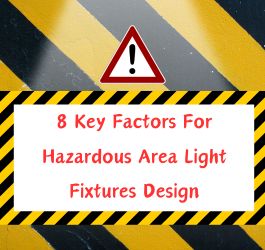As the deadline for meeting the commitments of the Paris Agreement draws nearer, there has been a noticeable increase in the adoption of sustainable practices across various industries.
One such measure is the implementation of LED retrofit projects, which involve converting traditional fluorescent lighting to eco-friendly LED lighting.
While the primary objective of such projects may be to reduce Scope 2 Carbon Emissions stemming from energy consumption, the significant cost savings achieved through reduced electrical consumables and energy usage serve as an additional compelling incentive for making this transition.
If you are involved in infrastructure management or own/manage facilities, considering an LED retrofit as an upgrade for this year can yield substantial advantages in terms of energy efficiency, cost reduction, and overall positive environmental impact.
This proactive step aligns with global sustainability goals and contributes to a greener and more efficient future.
Table Of Contents
- What is LED retrofit?
- Why choose LED lighting retrofit?
- Benefits of LED lighting retrofit
- Main considerations on LED retrofits
- Carbon footprint (CO2 emission levels) comparison
- How much does LED retrofit cost?
- Return On Investment (ROI) for LED retrofit
- LED retrofit projects - SOPEX INNOVATION
- Verdict: Should you retrofit LED lighting?
What Is LED Retrofit?
When you retrofit a facility, you are essentially incorporating new elements, technologies, components, or accessories into the existing structure that were not originally part of the initial construction.
The term "retrofit" is often used interchangeably with "conversion".
In the context of lighting, a common example of retrofitting is the transition to LED lighting, which involves replacing older lighting fixtures or technologies with modern, energy-efficient LED lights.
Why Choose To Retrofit LED Lighting?
LED lights are progressively supplanting conventional lighting technologies in a diverse range of lighting applications.
They prove invaluable for interior illumination, outdoor lighting, as well as compact lighting within mechanical systems and applications.
Moreover, when compared to traditional lighting, LED lights offer a multitude of advantages. We will talk more about it in the next part.
Benefits Of LED Lighting Retrofit

Opting for LED lighting retrofit offers several compelling advantages:
1. Energy Efficiency
LED lights consume significantly less energy compared to traditional lighting options, such as incandescent or fluorescent bulbs. This can lead to substantial energy savings and reduced utility bills.
2. Longevity
LEDs outlast traditional bulbs by a significant margin. They can shine brightly for up to 25,000 to 50,000 hours or even longer. This extended lifespan translates to fewer replacements and lower maintenance expenses.
3. Cost Savings
Although LED lights might entail a higher upfront cost, their long-term savings in terms of energy and maintenance costs usually surpass the upfront expense. This cost-effectiveness over time makes LED lighting a prudent and economically sound choice.
4. Environmental Benefits
LEDs are ecologically responsible because they do not incorporate hazardous substances like the mercury found in fluorescent bulbs.
Furthermore, their reduced energy consumption leads to diminished carbon emissions and a lighter environmental footprint, positioning them as one of the most popular choices of green technology in contemporary times.
5. Improved Lighting Quality
LED lighting frequently offers superior-quality illumination, characterized by reduced flickering and a more natural Color Rendering Index (CRI).
This can result in improved visibility and the creation of a more comfortable and conducive environment, ultimately enhancing productivity.
6. Instant Light
LEDs illuminate instantly at full brightness, in contrast to certain fluorescent lights that might necessitate a warm-up period. This feature is particularly useful in areas where immediate and full illumination is of utmost importance.
7. Dimmability
Numerous LED fixtures can be used with dimmer switches, providing the flexibility to adjust the lighting level precisely to suit various requirements and moods.
8. Reduced Heat Emission
LEDs generate minimal heat in comparison to incandescent and halogen bulbs. This characteristic can alleviate the strain on cooling systems and enhance the overall energy efficiency of buildings.
9. Adaptability
LEDs are available in a diverse array of shapes, sizes, and color temperatures, rendering them versatile for an extensive spectrum of applications.
They can be employed for task lighting, as well as for decorative and architectural lighting, adapting seamlessly to various lighting needs.
10. Reduced Light Pollution
LED lights possess an inherent directional nature, resulting in highly focused illumination. This characteristic plays a significant role in mitigating what is known as 'light pollution' by minimizing the dispersion of unwanted light in the environment.
11. Government Incentives
Many governments and utilities offer incentives and rebates for businesses and individuals who switch to energy-efficient lighting, including LEDs. These incentives can further offset the cost of retrofitting.
In summary, choosing to retrofit LED lighting offers a combination of energy efficiency, cost savings, improved lighting quality, and environmental benefits, making it a smart and sustainable choice for both residential and commercial lighting needs.
Main Considerations On LED Retrofits
When retrofitting your facilities with LEDs, it's important to understand that LEDs operate differently from most traditional lighting solutions.
Here are a couple of key considerations:
Fixtures vs. Luminaires
Fixtures and luminaires refer to different aspects of your lighting setup. If you intend to retain your existing fixtures, your choices for compatible LED bulb replacements may be somewhat limited.
However, if you plan to replace both the light source and the fixture (housing), you'll have a wider range of options available. Regardless, most LEDs are designed to be compatible with standard fixtures.
Dimming compatibility
The hardware used for dimming LED lights is generally not compatible with traditional lighting solutions. When switching to LED lighting, you will likely need LED-specific dimmers to complement the new LED bulbs. This ensures smooth and efficient dimming functionality.
Understanding these nuances can help you make informed decisions when transitioning to LED lighting, ensuring that you select the right components for your retrofitting project.
Carbon Footprint (CO2 Emission Levels) Comparison
When speaking about energy savings, it is paramount that we share about the overall reduction in carbon emissions as well. Since 2019, Singapore has implemented a carbon tax, set at S$5/tCO2e, and will be raised to S$25/tCO2e in 2024, and finally reaching S$50-80/tCO2e by 2030.

By mitigating CO2 emissions through the adoption of LED light retrofit projects, the benefits extend beyond mere reduction in environmental levies.
These retrofit initiatives not only propel us closer to realizing the aspiration of zero-carbon but also usher in a realm of cost-efficiency and a more eco-friendly trajectory.
This transition towards energy-efficient lighting not only yields economic savings but also paves the way for a sustainable and environmentally conscious future.
Although green taxes are not included when calculating ROI, it is good to know that the cost saving aspects of a LED retrofit project can be found in other areas too.
How Much Does LED Retrofits Cost?

Upon initial consideration, the initial higher costs of LED lighting fixtures might give potential buyers pause or delay discussions about conversion.
Nevertheless, in practice, LEDs prove their worth by delivering enhanced performance, extended lifespans, and substantial long-term cost savings, making them a wise investment.
It's important to remember that the advantages of LED lighting and the substantial long-term savings far outweigh the initial costs.
Return On Investment (ROI) For LED Retrofit

Return on investment, known as ROI, is used to calculate efficiency of the investment.
In LED retrofit projects, the approximate payback period is often provided in conjunction with ROI calculations. This payback period represents the time it takes for the total project cost to be recouped through the savings generated.
The savings realized through retrofit projects can typically be categorized into two primary types:
Consumable Savings
This refers to the reduction in expenses related to consumables such as bulbs or lighting fixtures. LED retrofits often lead to longer-lasting components, reducing the need for frequent replacements.
Energy Savings
LED lighting is energy-efficient, resulting in reduced electricity consumption compared to traditional lighting. These energy savings contribute significantly to overall cost savings.
Both types of savings contribute to the overall cost-effectiveness of LED retrofit projects, making them a financially sound investment over time.
SOPEX INNOVATIONS, one of our leading LED light distributors, provides a valuable and FREE service in the form of return-on-investment assessment. They are committed to delivering comprehensive Return on Investment (ROI) calculations for all LED projects (retrofit and replacement).
Additionally, SOPEX INNOVATIONS will generate detailed reports encompassing factors like Energy Cost, Lighting Cost, Consumables Cost, and a comparison of Carbon Footprints before the installation of LED Lights. These reports provide a precise analysis of the monetary benefits derived from the project.
One of their key strengths is ensuring a rapid ROI period, allowing property owners to realize profits in a relatively short time frame.
Typically, their investment payback period is less than 2 years, underlining the compelling financial advantages of transitioning to LED lighting solutions.
LED Retrofit Projects - SOPEX INNOVATION
STELLA KOSAN Project
STELLA KOSAN (IMO: 9373591) was built in 2018 and is sailing under the flag of Singapore. The proprietors of Stella Kosan have chosen to embrace environmentally friendly technology for their endeavor.
They have enlisted the services of SOPEX Innovations to replace their conventional lighting systems with SOP LED lighting solutions, as well as integrating SOPEX explosion-proof LED floodlights into their project.

- 67% total energy savings
- 163,637 kWh annual reduction in lighting energy consumption
- 127.4 tons less CO2 emission annually
PAC CAPELLA Project
The PAC CAPELLA (IMO: 9638616) is a General Cargo ship built in 2011. It is registered under the flag of Singapore and has a carrying capacity of 27,263 tons Deadweight (DWT).
The current draught of the ship is reported to be 6.4 meters, and it has a length overall (LOA) of 179.5 meters and a width of 27.2 meters.

- 91% reduction on CO2 emission annually
- Fast ROI period of 5 months
- 84,140kWh annual reduction in lighting energy consumption
For more information about their projects and offerings, It is recommended to visit their official website. It's a great way to explore their full range of services, projects, and any additional details or updates they may provide.
Verdict: Should You Retrofit LED Lighting?
It's an interesting fact that only about 10% of the total cost of operating a building throughout its lifetime is allocated to the initial purchase of the facility. The bulk of this cost, roughly 90%, is attributed to various operational expenses.
A significant portion of these operating costs pertains to energy expenses, covering heating and electricity, alongside structural maintenance. As for the electricity expenses, lighting stands out as the most substantial component.
Therefore, upgrading your facility to LED lighting emerges as one of the most intelligent investments you can undertake. LED retrofits offer undeniable advantages, including improved efficiency, cost savings, and the opportunity to embrace a greener future
What's more, these benefits can be realized within a short return on investment (ROI) period. Now might be the perfect time to initiate change by starting with the lighting upgrades in our surroundings.










